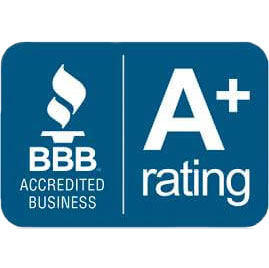
It’s no secret that the two largest shopping holidays of the year are quickly approaching: Black Friday and Cyber Monday. To kick off the holiday shopping season, we conducted a survey two weeks ago that asked one simple question: Where do you shop online?
This week, we’re diving into the poll results, as well as analyzing how these findings can potentially impact your brand's marketing strategy this holiday season.
Our poll results were broken down into five categories:

The gold-standard of success for any brand is name assocation. When you think of laundry detergent, a specific brand probably pops into your mind. The same goes for soft drinks, smartphones and certain food items (eggs, bread, milk, etc.).
For many loyal customers, the best place to buy a certain brand’s product is to visit their website directly. For our surveyed audience, however, this was not the most effective way to make an online purchase.
Now, there are many reasons that may drive a customer to seek a product elsewhere than the manufacturer’s website — potentially too many reasons to discuss in this article. Whatever those reasons may be, the results of our survey are apparent: a manufacturer’s website is not the first place the majority of people will look.
Google is undoubedtly a great tool to help users research products, read reviews and even find the various online outlets where products are sold. But based on the data culled from our survey, it is clear that there’s one thing our audience isn’t using Google for: to actually buy products.
This fact may be one of many reasons that Google recently integrated its shopping service with one of the world’s largest retailers, Walmart. Only time will tell if this strategy helps Google Shopping and/or Google Express gain more public traction.
Rounding out our lowest group of rankings, a small percentage of users polled preferred in-real-life shopping experiences to purchasing items online. Old habits die hard, and when it comes to shopping, some customers prefer walking into a store and holding the items they intend to buy.
Before primarily online retailers existed, the shopping scene was ruled by major retailers, such as Target, Walmart, Macy’s, JCPenney, etc. For these chains that were able to scale their in-person shopping experiences to the world wide web, our survey shows that many customers have maintained their retailer-buying habits when it comes to purchasing items online.
Unfortunately, it can be difficult for brands – particularly smaller businesses – to build relationships with major retailers that lead to the likes of Target and Walmart stocking their products for online sale.
Speaking of brand name association, there is one company that almost always comes to mind when the words “online shopping” are spoken. Serving as one of the largest online distributors in the world, the majority of our polled audience agrees that Amazon is the first place they go when purchasing products over the web. To many of our readers, this result is probably no surprise.
When looking at the poll results, the chart above says it all: if your brand’s products aren’t listed on Amazon, you’re potentially missing out on more than half of your annual revenue!
Of course, that doesn’t mean that your products should only be on Amazon.
Having your own eCommerce segment of your site that is search engine optimized and crawlable by the likes of Google is important to your brand’s online ranking and exposure. Even if this isn’t where you will make the majority of your money, having eCommerce can help your customers find and learn about your products before they make a purchase.
From a big-picture perspective, it’s best to anticipate everywhere your customers are likely to look for your products and accommodate them appropriately — not just accommodate some of your customers in some of the places they will be. Your brand has a duty to make it as easy as possible for your customers to invest in your brand.
Okay, so now that you know where your products should be for your online customers, it’s time to look at your business’ online selling strategy. Start by asking yourself the following questions:
Even if you don’t have all the answers to these questions by Black Friday or Cyber Monday, the holiday shopping season is just beginning. There is still plenty of time to get your online strategy squared away, but you have to start now.
If you liked participating in our survey and reading our responses breakdown, please hit the “heart” in the top right corner of this article.
To know when future surveys are posted, as well as their results, follow Seafoam on Facebook, Twitter and LinkedIn. We look forward to connecting with you!
* This survey was distributed through Seafoam’s social media channels. Participants were only allowed to vote once. Answers could not be changed after submissions were finalized. All data and information transmitted through this survey were completely anonymous.
























